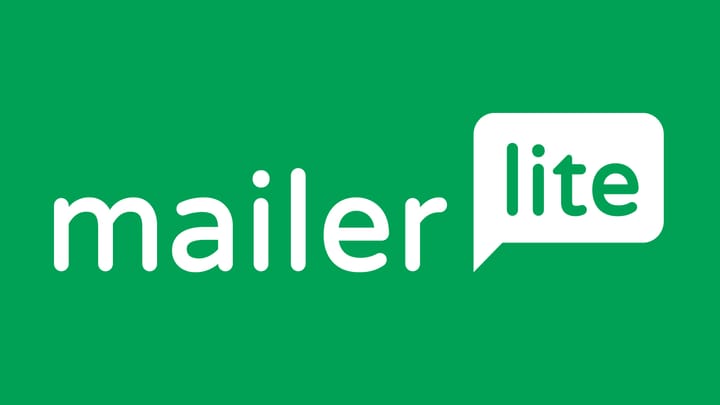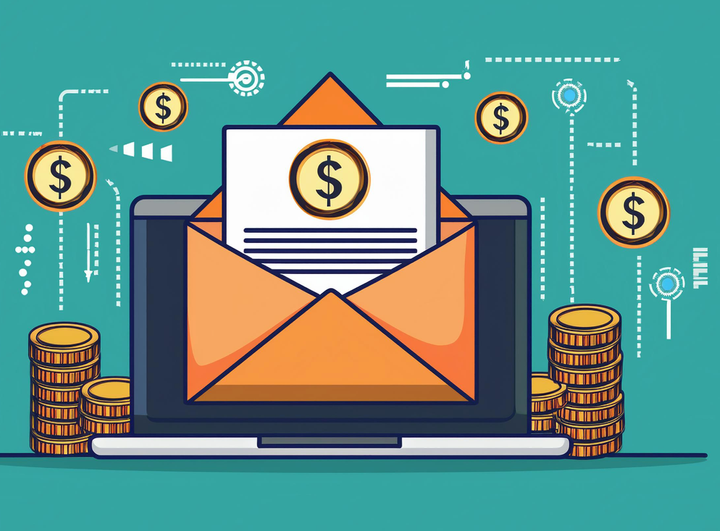What the Inbox Teaches Us About Human Attention (and How Tech Keeps Breaking It)
Your inbox is more than just a place for messages. It's a look at how people pay attention in the digital age, and to be honest, what we see isn't pretty.

You know that feeling when you open your email after a long weekend? Your stomach drops a little. The number next to "Inbox" glows an angry red: 247 unread messages. Before you've even had your morning coffee, you're already behind.
This little flash of fear right now shows us something important about how our brains work and how technology has learned to mess with them. Your inbox is more than just a place for messages. It's a look at how people pay attention in the digital age, and to be honest, what we see isn't pretty.
Why That Little Red Number Controls Your Life
You can't ignore that unread count for a reason. The Zeigarnik Effect is what psychologists call it. It's just a fancy way of saying that our brains don't like things that aren't done. In the 1920s, a researcher saw that waiters could remember complicated orders perfectly until the food came. When the job was done? They forgot it all.
When you get an email, your brain works the same way. Those unread messages aren't just sitting there; they're bothering you and taking up mental space even when you're not looking at your phone. There are 247 little voices in the background of your day saying "you forgot something."
And that notification badge? It's like a slot machine for your mind. You get a little hit of dopamine every time you check and find something new. Your brain remembers the exciting times, like when you get a message from a friend, and the bad times, like when you get yet another promotional email. So you keep looking, just in case.
The visual cue makes people feel like they need to act right away, even though they don't. Most emails don't need to be read right away. But that red badge can't tell the difference between "Your package has shipped" and "System failure: URGENT." To your brain, they're all things that need to be completed.
Your Ancient Brain Meets Modern Email
Here's the thing: your brain is incredibly adept at noticing new things. This kept your ancestors alive.
That rustle in the bushes? It could be a predator. This kind of activity is what kept your ancestors alive. What is that rustling in the bushes? It could be a hunter. You should probably look into it. The human brain evolved to put new information first because missing something important could mean death.
That same survival instinct kicks in every time your phone buzzes now. Now, instead of worrying about predators, we are distracted by a newsletter that offers tips on how to be more productive. The irony hurts.
This is why people feel the need to check their email all the time. You aren't weak-willed; you're just using old software that wasn't made for the modern inbox. Your brain thinks that every new email could be important, even though 95% of them aren't.
And this is where it gets hard: going through email makes you feel like you're getting things done. Y
You're doing something! Choosing things! Getting rid of things! But most of the time, managing your inbox is just moving things around. You're wasting mental energy on sorting through messages instead of getting work done. It's the false sense of productivity, and we've all fallen for it.
The Inbox Zero Trap
Have you ever noticed how nice it is to have no unread messages? That's your brain celebrating that you finished a task. It's the same feeling of satisfaction you get from crossing things off a to-do list or finishing a puzzle. The issue is that email is never really done. There is always another message waiting for you.
But before you get upset about never getting to Inbox Zero, think about this: every email needs a decision. Should I read or skip? Do you want to answer now or later? Should I keep it or get rid of it? Which folder should I put the file in? These small choices add up quickly.
Your brain is worn out by the time you've sorted through 50 emails, and you haven't done any real work yet.
This is called decision fatigue, and it's why your inbox makes you more tired than you think. Every message pulls you in a different direction, which makes you switch contexts and uses up mental energy. Your brain needs time to switch gears, but modern email doesn't let you have that time.

How We Got Here
Email started as a solution. It was meant to be asynchronous, meaning that you send a message and someone reads it when they're ready. No interruptions, no stress, just clear communication.
Then things changed. We can carry email with us on our smartphones. You could now check messages anytime, anywhere. And if you could check, you might want to. Employers wanted answers faster. "I'll get back to you tomorrow" turned into "Why haven't you replied in an hour?"
Push notifications were the last straw.
Email didn't wait for you to check it anymore; it reached out and grabbed your attention whenever it wanted. The line between work time and personal time became blurry. Email went from something you used to something you had to do.
The Design Choices That Broke Us
Let's talk about how email apps make things worse.
That never-ending scroll? It's borrowed from social media and meant to keep you interested. There's always one more screen to scroll through and one more message to read. If there is no natural stopping point, there is no natural time to leave.
Priority inbox sounded like a good idea. Let algorithms decide what's important. But in real life, it made people worry about what would happen if something important ended up in the regular inbox. Now you have to look in two places and trust a system that you don't fully understand.
Read receipts and delivery confirmations made things even more stressful. Now the people who send you messages know exactly when you've read them. People expected answers right away even more. Email stopped being asynchronous and started to feel like a slower, more stressful version of instant messaging.
While you're trying to deal with old messages, auto-refresh keeps bringing in new ones. It's like trying to empty a bathtub while someone keeps turning on the water. You never get anywhere, and it's tiring.
The Economics of Your Attention
Here's something you should know: many email services make money by keeping you busy. The more time you spend in your inbox, the more ads they can show you and the more they can learn about you. The design isn't broken; it's doing what it was meant to do, but not for you.
This is how the economy of attention works. Companies want your attention because it is valuable. Email providers aren't concerned about your peace of mind or productivity; they care about engagement metrics. They want you to check in often, stay longer, and come back often.
At the same time, newsletters and marketing emails became very popular because sending them is cheap and they make money when they work. Companies figured out that they could reach customers directly and over and over again for almost no cost. That's what they did. A lot. Brands fight for your attention in your inbox, and you're stuck in the middle.
What Doesn't Work
Over the years, email providers have tried various solutions. Most of them miss the point. Now that you have to manage rules and folders instead of messages, complex filtering systems just make things harder. Same problem, more steps.
Snooze features seem useful, but they often just put things off. That email you put off until next week? It will still be there next week, and it will probably have 50 new friends. You haven't fixed anything; you've just put off dealing with it.
Gamification tried to make managing your inbox fun by giving you badges, streaks, and achievements for clearing messages. But your inbox isn't a game, and treating it like one doesn't solve the real problem: you get too much email, and a lot of it needs your attention.

What Actually Helps
Some approaches show more promise. Simple, functional unsubscribe links that actually work (immediately) respect your attention and your choices. You get some control back when you can easily opt out of emails you don't want.
People don't give enough credit to scheduled email delivery. What if your email only came in at certain times you chose instead of all day? Batch processing works better than constant interruptions, but most systems send things in real time by default.
Protocols like DMARC, SPF, and DKIM help make sure that emails really do come from the people they say they do. This cuts down on spam and phishing, which means there is less junk to look at. It might not be pleasing, but it matters.
Taking Back Control
So what can you actually do? Start simple: Turn off all email alerts on your phone to begin. Every one of them. Don't check your email when your phone tells you to; do it when you want to. Check three times a day: in the morning, at noon, and in the late afternoon. You won't believe how little you miss.
The "touch it once" rule can help prevent decision fatigue: address an email immediately upon opening it. Don't close it to "deal with later."
Instead, reply, delete, or file it. You won't ever get to it later; you'll just read it again and again.
You are also responsible if you send emails. Do what people ask you to do right away. Send fewer emails, but make them better. Make sure your subject lines are clear so people can tell if they need to read your message. Make sure that people only get emails that are relevant to them by dividing your lists into groups. It's not hard; it's just polite.
Looking Forward
The future of email needs to look different. We need systems that default to protecting attention rather than capturing it. Delayed delivery as standard practice. Better AI that actually filters noise without creating anxiety about missing something important. Community-driven reputation systems where recipients collectively signal which senders are trustworthy.
Success looks like email becoming a tool again, not a source of stress. It means opening your inbox without dread. It means senders and receivers both treating email as valuable communication, not just noise. It means building systems that serve human well-being, not just engagement metrics.
The Bottom Line
If you pay attention, your inbox is teaching you something. It shows how easy it is for technology to mess with people's minds. It shows that design choices that seem neutral can have a big impact on how people act. It shows that our attention is limited, valuable, and always under attack.
But here's the good news: we made these systems, so we can make them better. Instead of maximizing engagement, tech companies can design for human flourishing. Senders can show respect for the people they send. And we can all set limits to protect our focus.
At Maileroo, we believe that reliable, ethical sending infrastructure is part of the solution. Sending emails responsibly, authenticating them, and delivering them quickly benefits everyone. The inbox is less cluttered, and your focus is less divided.
You own your attention. Your inbox is just one battle in the bigger fight for focus in the digital age. But it's a fight worth having, one unsubscribe, one disabled notification, and one conscious choice at a time.



